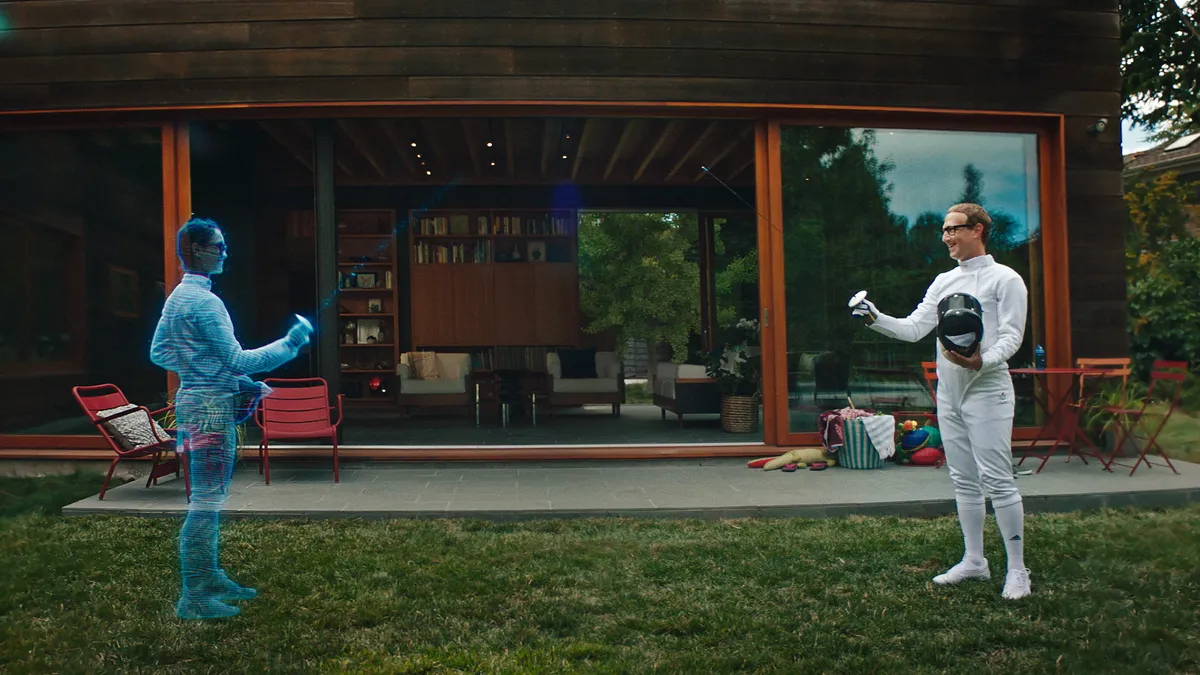Brands are vying to make their websites and apps stand out as consumers worldwide spend a significant portion of their day on connected devices. They can make those experiences more interactive, immersive and informative with augmented reality (AR) content that engages potential customers at all stages of the purchase funnel.
"Not only are brands using AR as an always-on format, but they're also using AR as a full-funnel solution," said Allison Ferenci, co-founder and CEO of software company Camera IQ. "They're trying to use AR at every customer touch point from driving awareness to getting deeper consumer engagement to increasing conversion at checkout."
Her company, whose software helps to simplify the production of AR experiences by eliminating the need to write computer code, has seen how brands can transform their digital presence by making it more fun for end users. Instead of limiting brands' online content to static images or traditional videos, marketers can create virtual objects that give new and existing customers more control over their experience. Those interactions have grown increasingly vital during the pandemic as homebound folks connect with brands on mobile devices — on top of dynamic virtual experiences that will be key to burgeoning metaverse environments.
"Consumers crave experiences," Ferenci said. "They're not just looking anymore for passive, flat content like photo and video. They want to be part of the experience."
In the five years since the hit mobile game Pokemon Go brought AR to the global mainstream, the technology has evolved to be more pervasive as brands integrate it into marketing material. So far, the most popular applications include virtual try-ons of cosmetics, photorealistic demonstrations of home furnishings and immersive digital shopping.
'Camera-first and mobile-first'
AR's power to outperform passive content is evident in a variety of campaigns and activations Camera IQ has helped brands to develop. Moreover, passive content generates an engagement rate of 1.6%, compared with 50% for the more robust AR experiences.
"The big thing when it comes to AR is to not just focus on that bottom-of-funnel conversion. Instead, think about the creative format and that you're really delivering an experience to your customer."

Allison Ferenci
Co-founder and CEO, Camera IQ
At the lowest part of the purchase funnel, consumers are more likely to transact after interacting with an AR experience, according to Camera IQ. Its research found that conversion rates for AR activations notched 12%, or more than three times as much as the 3.5% for photo and video content. These experiences can be more intimate for consumers because they're delivered through their personal smartphones and are often tied to the users' physical surroundings.
"One of the reasons we've focused on mobile is that there are 4 billion daily active camera users across social media," Ferenci said. "We felt it was the lowest barrier to entry for a brand to actually test and see AR work for them, as well as a place where you could test and learn very quickly. The consumer behavior today is camera-first and mobile-first."
Attention, mobile shoppers
So far, mobile devices have proved to be a key part of this year's holiday shopping season, especially for browsing. Smartphones made up about 62% of online visits to retailers on Black Friday, up 1.6% from a year earlier, according to Adobe Analytics. Mobile shoppers also were ready to spend money, with smartphones powering 45% of all online sales, up nearly 13% from the prior year.
"Consumers have been used to browsing e-commerce websites for the past few years," the Adobe report noted. "Now, their spending habits are catching up as retailers make the mobile experience smoother, and their devices become bigger and faster."
Improvements to smartphone performance and the rollout of higher-speed 5G networks have been expected to make data-intensive AR content easier for consumers to download and interact with. These upgrades will give brands more creative freedom in developing higher-tech AR experiences.
"The big thing when it comes to AR is to not just focus on that bottom-of-funnel conversion," Camera IQ's Ferenci said. "Instead, think about the creative format and that you're really delivering an experience to your customer. The opportunity is to deliver an experience in an always-on format."
Ferenci cited packaged goods giant Nestlé, a Camera IQ client, as a marketer that has seen positive results from its always-on AR for more than 20 of its brands across 18 regions. Just over half of people (54%) who see its AR content choose to use it, Ferenci said.
She recommends marketers develop AR content based on their brand objectives, whether that includes driving awareness, direct sales or both. Awareness campaigns may include elements that encourage people to play with an AR object, to familiarize themselves with a brand and to share it with others on social media. A lower-funnel strategy would focus more on guiding people to a purchase decision.
"That's how the creative that you authored starts to change based on where the consumer is and what your goal is in the outcome," Ferenci said. "In an AR experience, there's actually a lot of nuance based on the objective you have."






















